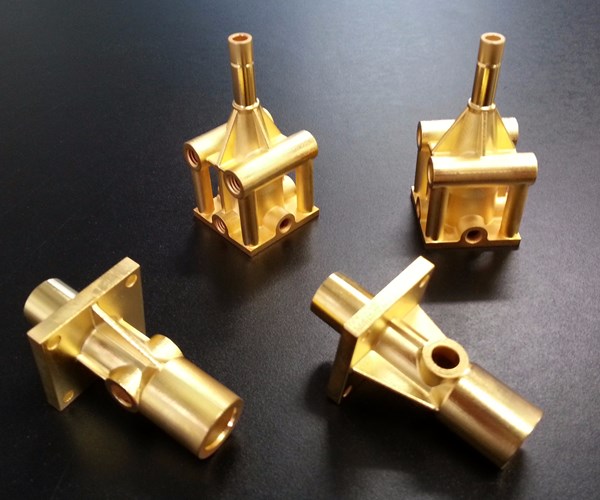Combining 3D Printing and Electroplating for Replicable Experimentation
Andreas Osterwalder calls his office a museum: what looks like a collection of small machines are 3D printed and partially electroplated parts that the scientist has been creating for his experiments.

A great story about the latest on plating and 3D printing from formlabs.com, which tells the story of Andreas Osterwalder.
From formlabs.com:
Andreas Osterwalder calls his office a museum: what looks like a collection of small machines are 3D printed and partially electroplated parts that the scientist has been creating for his experiments at the Swiss Federal Institute of Technology in Lausanne (EPFL).
Experimental setups like Osterwalder’s beamsplitter function as highly complex machines, and turning a research idea into the actual experiment can easily take months or even years. A common bottleneck is the actual fabrication of specific customized components.
With the help of a electroplating company specialized in rapid prototyping parts, Osterwalder has found a method to expedite and lower the cost of advanced experimental setups using 3D printing and electroplating.
To read more, visit HERE
Related Content
-
NASF/AESF Foundation Research Project #123: Electrochemical Manufacturing for Energy Applications - 1st Quarterly Report
For 2022, NASF-AESF Foundation Research Board has selected a project on electrodeposition toward developing low-cost and scalable manufacturing processes for hydrogen fuel cells and electrolysis cells for clean transportation and distributed power applications. This report introduces the project and outlines the work to be undertaken.
-
NASF/AESF Foundation Research Project #123: Electrochemical Manufacturing for Energy Applications – 2nd Quarterly Report
For 2022, NASF-AESF Foundation Research Board has selected a project on electrodeposition toward developing low-cost and scalable manufacturing processes for hydrogen fuel cells and electrolysis cells for clean transportation and distributed power applications. This report is the 2nd quarterly report, covering work during April-June 2022 and consists of an edited manuscript, “Manufacturing and Thermal Shock Characterization of Porous Yttria-Stabilized Zirconia for Hydrogen Energy Systems.”
-
NASF/AESF Foundation Research Project #123: Electrochemical Manufacturing for Energy Applications - 7th Quarterly Report
The NASF-AESF Foundation Research Board selected a project on electrodeposition toward developing low-cost and scalable manufacturing processes for hydrogen fuel cells and electrolysis cells for clean transportation and distributed power applications. In this period, we followed our work on 3D printing anode support for solid oxide fuel cells, SOFC (or cathode for solid oxide electrolyzers, SOEC) based on our designed optimization outlined in the previous report. We worked on optimizing the printing parameters, obtaining binder burn out and sintering profiles to obtain printed parts with desired geometry and properties.















